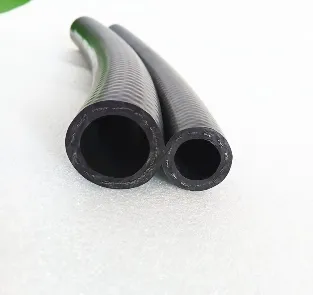335345435
Aug . 07, 2025 10:43 Back to list
Choosing the Right Gasoline Hose: Flexibility, Resistance, and Supply Options
In any fuel transfer operation—from gas stations and vehicle refueling setups to bulk fuel distribution systems—the gasoline hose plays a vital role. It’s responsible for safe, efficient, and leak-proof transfer of highly flammable petroleum products. But not all hoses are created equal.
If you're shopping for a flexible gasoline hose or trying to understand what makes a gasoline resistant hose reliable and safe, this guide will help you navigate hose types, construction, applications, and sourcing.

What Is a Gasoline Hose?
A gasoline hose is a flexible, durable hose designed specifically for transferring gasoline and other petroleum-based fuels. It’s engineered to handle:
Hydrocarbon-based liquids like gasoline, diesel, ethanol blends, or kerosene
High flow rates and repetitive motion during use
Potential exposure to heat, abrasion, and weather
Static electricity and volatile vapor concerns
These hoses are used in:
Fuel dispensers and gas station pumps
Fuel transfer from drums or tanks to vehicles or machinery
Automotive and small engine fueling
Marine fueling applications
Bulk fuel delivery trucks
Key Features of a Quality Gasoline Hose
Not every hose is suitable for fuel handling. A proper gasoline resistant hose must include:
Fuel-resistant inner tube: Usually made of Nitrile (NBR), Viton, or specialized blends that resist chemical degradation.
Reinforcement layer: Braided textile or wire for pressure resistance and kink control.
Conductive properties: To safely dissipate static electricity buildup.
Abrasion- and weather-resistant outer cover: Typically synthetic rubber like Neoprene or EPDM.
UL or ISO certification: For safety and regulatory compliance in fuel dispensing.
Types of Gasoline Hoses
There are several gasoline hose types, depending on the use case:
1. Fuel Dispenser Hose (UL330 / EN1360 Standard)
Installed at gas station pumps
Designed for repeated flexing, UV exposure, and customer handling
Typically ¾" or 1" inner diameter
Includes static wire for grounding
2. Fuel Transfer Hose
Used for transferring fuel from tank to equipment
Often equipped with camlock or thread fittings
May include crush-proof spiral reinforcement
3. Flexible Gasoline Hose (Light-Duty)
Ideal for portable fuel tanks, generators, or small engines
Lightweight and easy to maneuver
Not suitable for commercial dispenser installations
4. Hardwall vs. Softwall Hoses
Hardwall hoses include embedded wire for suction or pressure use
Softwall hoses rely solely on textile reinforcement—more flexible, but limited to gravity or low-pressure transfer
Why Flexibility Matters
A flexible gasoline hose allows for easier handling and safer operation, especially in:
Mobile refueling units
Compact fuel tank connections
Marine or aviation fueling systems
Temporary installations or repairs
Flexibility ensures fewer kinks, better recoil, and longer service life where repetitive movement is required.
What Makes a Hose Gasoline Resistant?
A gasoline resistant hose isn’t just about the outer rubber—it’s the entire structure that counts. The inner tube must withstand:
Chemical attack from hydrocarbons (aromatic and aliphatic fuels)
Additives like ethanol (E10, E85) or MTBE
Heat and pressure fluctuations
Top materials used in fuel-compatible hoses include:
Nitrile rubber (NBR) – Common, affordable, good general resistance
Viton (FKM) – Excellent chemical and high-temp resistance (premium)
Polyurethane blends – Lightweight, flexible, moderate fuel compatibility
Fluoroelastomers – Found in high-end industrial fuel hoses
Gasoline Hose Sizes and Specs
Common sizes for gasoline hoses:
|
Inner Diameter |
Applications |
|
1/4"–3/8" |
Small engine, fuel line hoses |
|
1/2"–5/8" |
Transfer hoses, tanks |
|
3/4"–1" |
Dispenser nozzles, truck refuel |
|
1.25"–2" |
Bulk tanker discharge |
Important specs to review:
Max working pressure (usually 150–300 PSI)
Burst pressure (typically 3x working pressure)
Temperature range (–40°C to +80°C or more)
Fittings (threaded, quick connect, camlock, crimped)
Gasoline Hose Prices: What to Expect
Gasoline hose prices vary based on:
Hose diameter
Pressure and temperature rating
Type of reinforcement
Outer cover material and fuel compatibility
Length and end fittings
Certifications (UL, SAE, ISO)
Estimated 2025 Price Range (USD per meter):
|
Hose Type |
Price (USD/meter) |
|
1/4" fuel line hose |
$1.50 – $3.50 |
|
3/4" dispenser hose |
$6.00 – $12.00 |
|
1" hardwall fuel hose |
$10.00 – $18.00 |
|
Viton-lined high-end hose |
$18.00 – $30.00 |
Bulk rolls (50m or 100m) and OEM orders may reduce pricing by 20–40%, depending on supplier and region.
Gasoline Hose FAQs
Q1: Can I use a regular rubber hose for gasoline?
A: No. Regular rubber hoses degrade quickly when exposed to gasoline. Always use hoses labeled fuel- or gasoline-resistant with proper certification.
Q2: How do I know if a hose is safe for ethanol-blended fuels?
A: Look for hoses specifically rated for E10, E15, or E85 compatibility. Nitrile and Viton are more resistant to ethanol-based fuels.
Q3: What’s the difference between hardwall and softwall fuel hoses?
A: Hardwall hoses include steel or wire reinforcement and are suitable for suction/discharge; softwall hoses are more flexible but lower pressure.
Q4: Can I buy fuel hoses with fittings pre-installed?
A: Yes—many suppliers offer hose assemblies with crimped, swaged, or threaded fittings tailored to your needs.
Q5: Where can I buy gasoline hose in bulk or wholesale?
A: Contact OEM manufacturers, distributors, or browse industrial B2B platforms. Bulk buyers often get lower pricing and custom hose lengths.
-
LPG Hose: Choosing the Right Hose for Safe, Reliable Gas Transfer
NewsAug.07,2025
-
Industrial Hose: Types, Applications, and Where to Find Reliable Suppliers
NewsAug.07,2025
-
Hydraulic Hose Pipe: Types, Pricing, and How to Source the Right One
NewsAug.07,2025
-
Hydraulic Fittings: Types, Customization, and Where to Source Them
NewsAug.07,2025
-
High Pressure Washer Hoses: Buying Guide, Specs, and Supplier Insights
NewsAug.07,2025
-
Choosing the Right Gasoline Hose: Flexibility, Resistance, and Supply Options
NewsAug.07,2025



